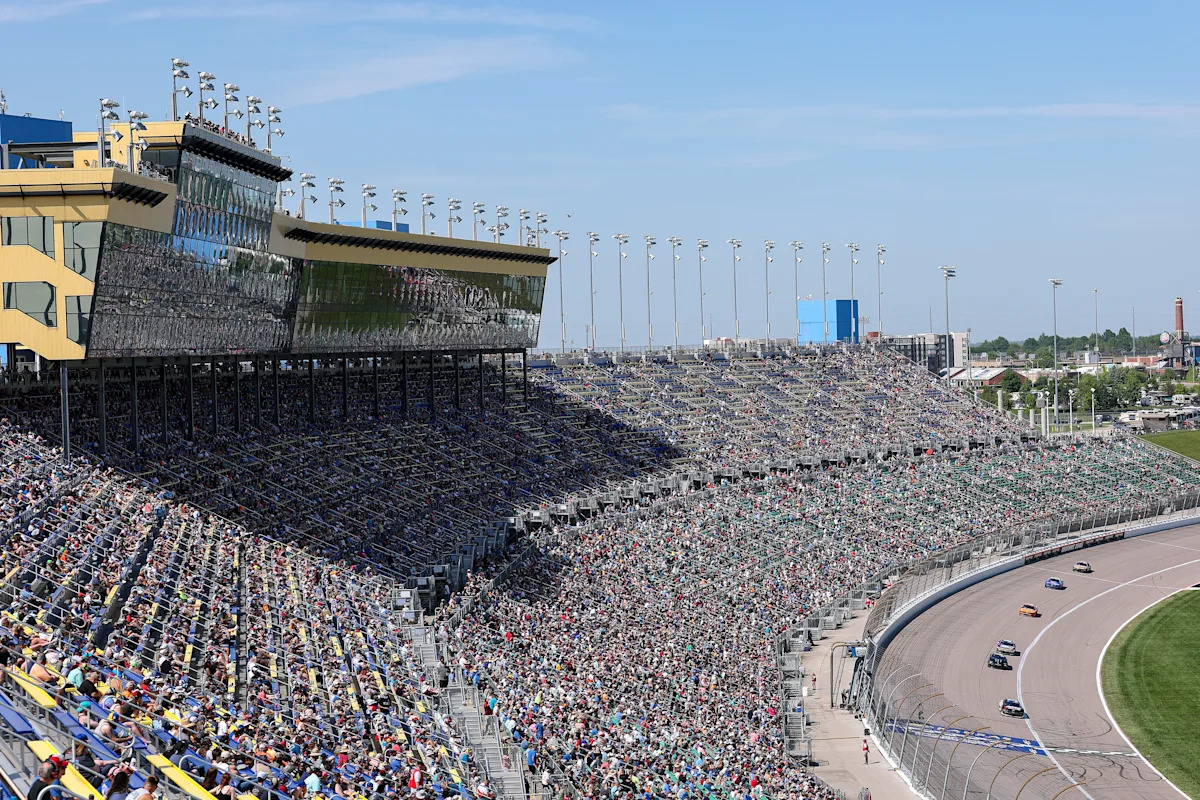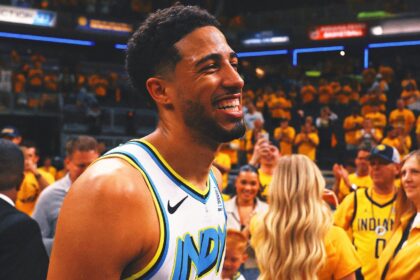Kyle Larson’s win at Kansas Speedway highlighted some of the core challenges NASCAR faces as it moves forward into the 2020s. Larson’s performance was outstanding—he dominated by winning all three stages and clearly had the fastest car. However, the excitement dimmed slightly on the final lap when Larson’s car slowed down, barely crossing the finish line less than a second ahead of Christopher Bell. If the race had extended just one more lap, Larson might not have taken the victory.
More concerning than the race result was the sparse crowd in attendance. Once packed during the 2000s and early 2010s, the grandstands on Sunday were only about half full, allowing fans plenty of space to spread out. If you looked closely, you could even see how the seats spelled out “Kansas Speedway.”
Kansas is considered one of NASCAR’s premier tracks. Its 1.5-mile oval, affected by harsh Midwest winters, creates significant tire wear and features progressive banking that allows multiple racing lines. On a bad day, it can still maintain three lanes of racing, while after a reset it can offer four or five different racing opportunities.
Just last year, Larson beat Chris Buescher in NASCAR’s closest-ever finish at Kansas, winning by a mere 0.001 seconds after the race was restarted for two extra laps. Despite the dramatic finish, the race showcased how exciting Kansas racing can be. If the track were situated further south, it could easily host a championship race in early November, as NASCAR plans to rotate title race venues starting in 2026.
Still, the question remains: will fans come out even if Kansas hosts such a major event? Promoting NASCAR’s top tracks should be straightforward, but attendance numbers and local engagement lately suggest otherwise. The race on Mother’s Day coincided with major local high school graduations, and although the NASCAR event is significant for Kansas City, the city seems to have lost enthusiasm for it in recent years.
This struggle isn’t limited to Kansas City. NASCAR has cut back significantly on its public relations efforts in recent years to reduce costs, but these reductions appear to have hurt promotion. Despite this, NASCAR remains the top motorsport in the U.S. Recently, a Cup Series race at Texas Motor Speedway drew more TV viewers than the Formula 1 Miami Grand Prix, even though it aired on the smaller Fox Sports 1 channel, compared to ABC’s coverage of F1. The demographics also differ, with F1 attracting a younger audience compared to NASCAR.
While it’s an exaggeration to claim NASCAR is facing a crisis, the sport’s TV ratings have stabilized after years of decline, thanks in part to a new television contract. However, there is little hope NASCAR will return to its peak popularity levels from 20 years ago. If the sport struggles to fill seats at its best tracks, it’s fair to question whether everything is really alright.
Fan Take: This story is a wake-up call for NASCAR fans—it shows that even the sport’s finest races can’t fill stadiums like they used to. If NASCAR wants to thrive, it must ramp up promotion and reconnect with its fan base to bring back the excitement and crowds of the past.



